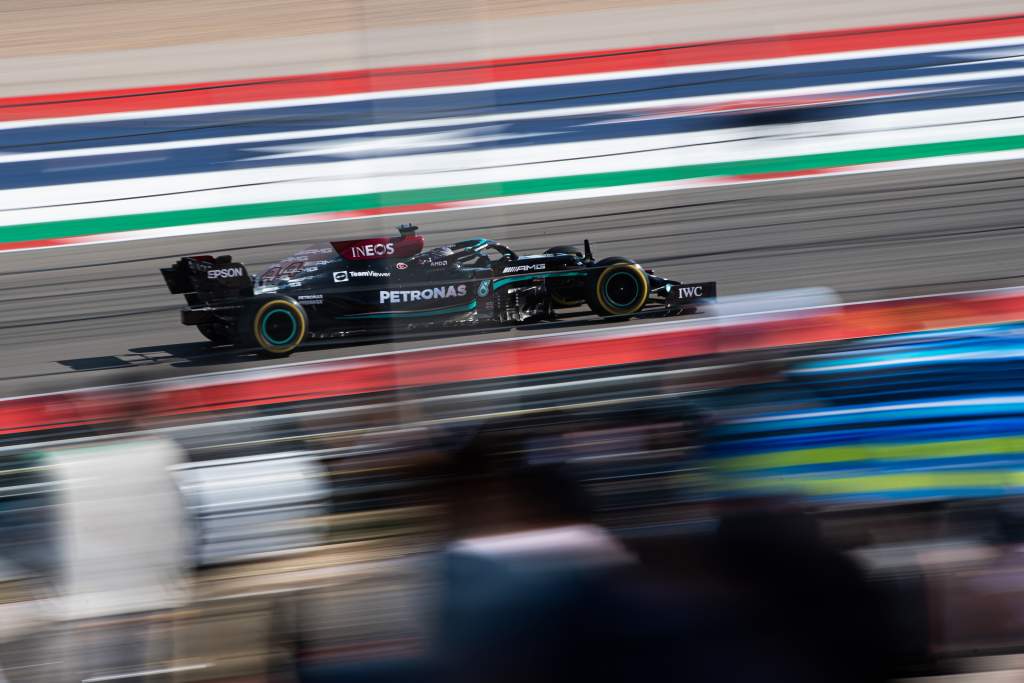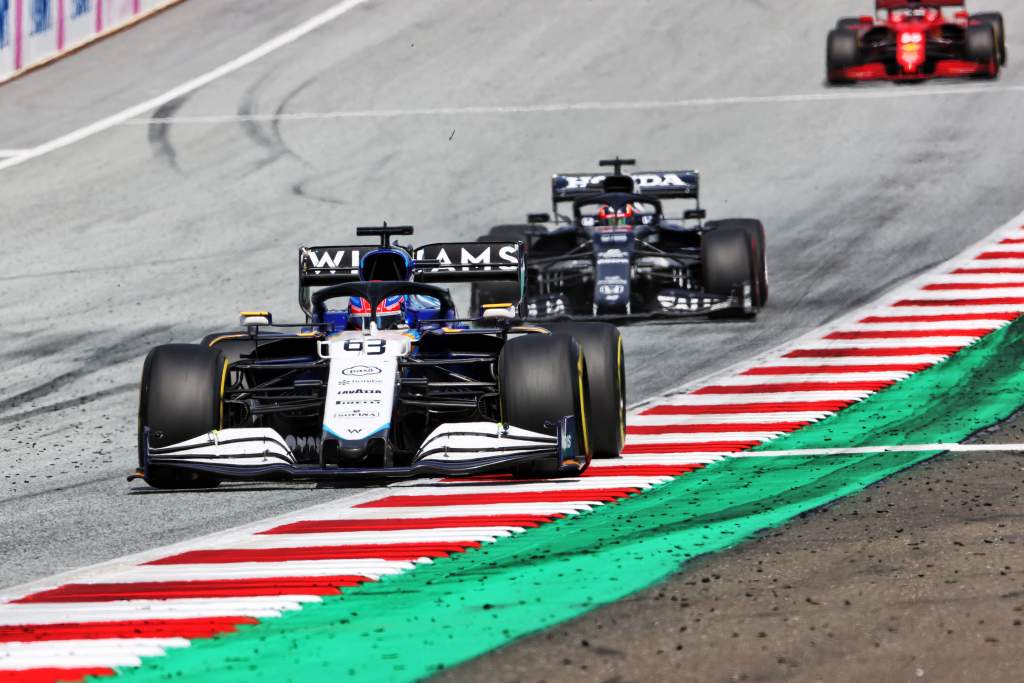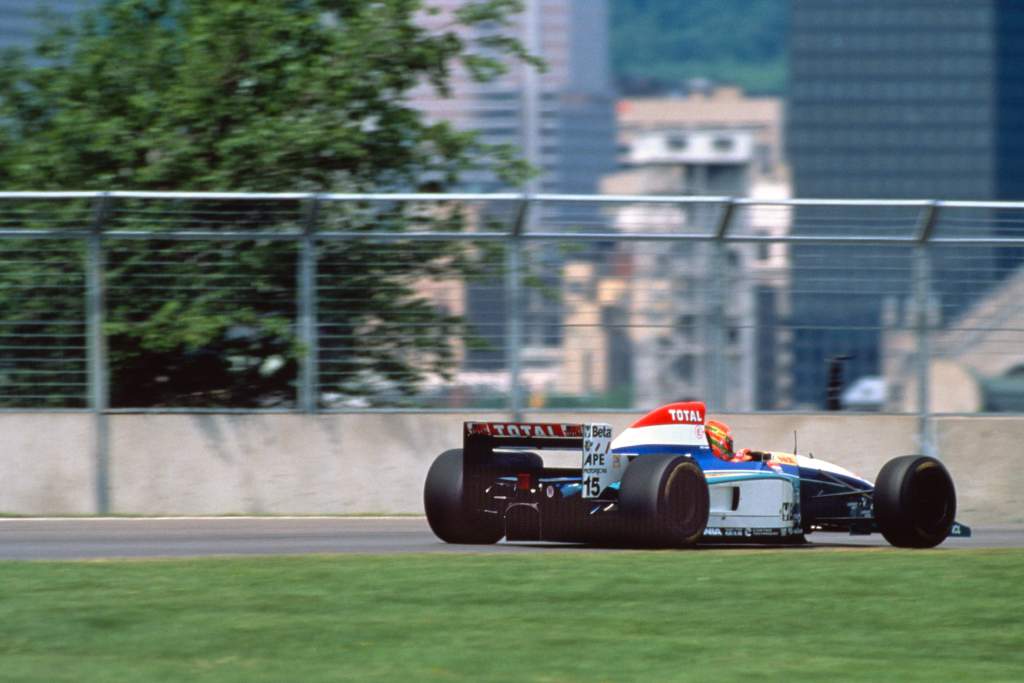During the second United States Grand Prix Formula 1 practice session yesterday, Sky Sports F1’s Karun Chandhok reported from the pitlane that Lewis Hamilton had just pitted and the Mercedes team was topping up a fluid system on the car.
It was a good spot, but I think it was air for the air valve system. And that top up in the pitlane might just have been a practice run just in case Mercedes needs to do it during the race.
There have been problems with this previously this season, notably with George Russell’s engine at the Red Bull Ring.
These engines don’t have valve springs as we know it. They run with a small air cylinder around the valve, which acts as a spring. They are normally connected together in a small diameter common manifold and that, in turn, connects to a reservoir of air that is pressurised.
Depending on the open area on the cylinder itself, these cylinders around the valves run at a reasonably low pressure – perhaps 5 to 10bar.
The interlinking manifold means that all the valves see the same resistance while they are being opened and closed.

The reservoir will be at a high pressure, perhaps 200bar. This means it can be physically small but carry a large volume of air to keep the system topped up.
In the old days with springs, it was a nightmare for engine builders to get a set of springs that were the same length and offered the same force when the valve was being held shut and then again when it was fully open.
With the high revving engines of the mid to late 1990s and 2000s, the springs just couldn’t cope and they would lose control of the valve so along came the air valve system.
As in life, you get nothing for free in F1. The air valve system comes with its own problems and in my time I have suffered many different failures because of these systems.

When we ran Peugeot engines at Jordan in 1995-97, we had numerous failures in the beginning. These were mainly caused by inadequate scavenging of the engine oil from the heads and then engine oil getting into the air valve cylinder.
As the volume in those cylinders is very small, it doesn’t take much oil to damage the seals. When that happens you soon lose the volume of air in the system and with it the pressure to close the valves, and normally that’s the end of story for that engine.
All the engine builders will have a pressure sensor in the reservoir system to detect any problems. And when that pressure starts to drop it is a case of detecting the rate of loss to see if you will make it to the end of the race.
If not, you have three options. You can try to top up the system during a scheduled pitstop. Or you can make an extra pitstop to do just that. Or if it is dropping too quickly you can simply retire the car – as happened with Russell at the Red Bull Ring.

Most engine builders will have an automatic engine cut out or rev reduction system in the software to reduce the risk of a blow-up, but to use that during a race means you have to have confidence in the information from the sensor or sensors.
You might use this during practice but in the race most would turn it off and simply react to the data they are receiving.
I remember the first time we had this problem in a race with Peugeot. We got ready to top up the system during the pitstop, the Peugeot mechanic was all set. His plan was to connect for five seconds by just counting.

We brought the car in, the tyres were changed, fuel went in and the air top-up system was connected to the dry break on the sidepod of the car.
It was all done and the car disappeared down the pitlane, so everyone was happy.
Unfortunately, the Peugeot mechanic forgot to turn on the valve on the top of the remote cylinder he was using to top up the system. Nothing went in, so we were no further forward and had to retire the car as the leak had got worse. That’s why it’s a good idea to practice this process occasionally.
It will be interesting to see exactly what the scale of this problem is. When Sky Sports F1 presenter Simon Lazenby questioned Toto Wolff yesterday on the rumour that Mercedes was having some sort of air valve problem within the engine, he was quick to dismiss this.
But it wouldn’t surprise me if that was true even though this problem doesn’t appear to be the same as the one that is causing the internal combustion engine to be changed so often.
The systems, or at least the ones I have been involved with, never seal 100%. But you design the volume of it to cope with, say, a 5% leak over a race distance so it’s a problem you can live with if monitored very closely.
If the leak gets to 10%, you need to react but when it really goes wrong, it goes wrong very quickly and dramatically – usually in a cloud of smoke for all to see.



